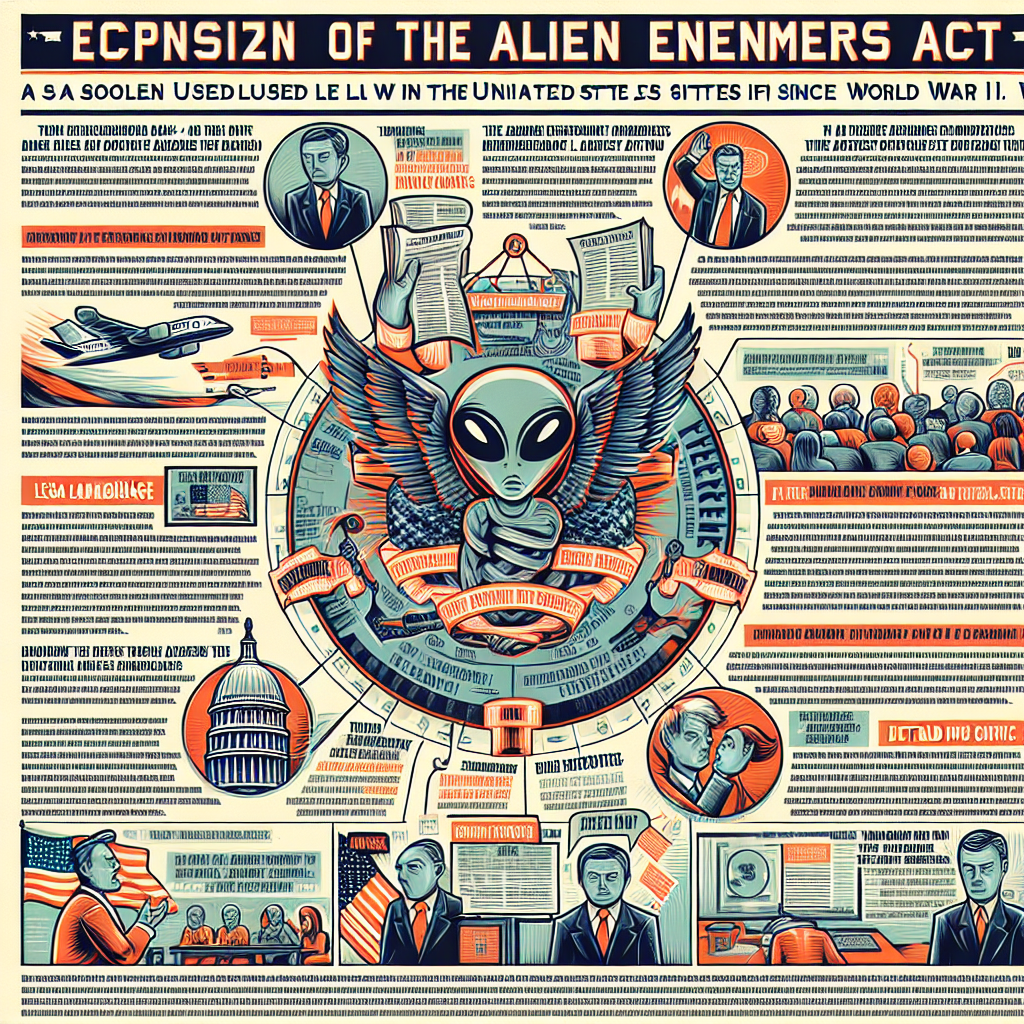Understanding the Alien Enemies Act: A Rarely Invoked US Law Since WWII
Understanding the Alien Enemies Act: A Rarely Invoked US Law Since WWII
Introduction to the Alien Enemies Act
The Alien Enemies Act, part of the Alien and Sedition Acts of 1798, is a seldom-used piece of legislation that grants the U.S. government specific powers during times of war. This law allows the President to detain and deport non-citizens from hostile nations, ensuring national security during conflicts.
Historical Context and Usage
While the Alien Enemies Act has been part of U.S. law for over two centuries, its application has been limited, with the most notable use occurring during World War II. During this period, the U.S. government detained and relocated individuals from countries with which it was at war.
- Enacted in 1798 as part of the Alien and Sedition Acts.
- Primarily used during World War II to detain individuals from enemy nations.
- Allows the President to act without prior approval from Congress.
Legal Framework and Implications
The Alien Enemies Act provides a legal framework for the U.S. government to manage potential threats from foreign nationals during wartime. It empowers the President to determine the necessary actions to protect national security, including detention and deportation.
- Applies only during declared wars or military conflicts.
- Targets nationals from countries deemed hostile to the U.S.
- Raises concerns about civil liberties and due process.
Modern Relevance and Criticism
In contemporary times, the Alien Enemies Act remains a controversial topic, with debates surrounding its relevance and potential for misuse. Critics argue that it poses risks to civil liberties, while proponents emphasize its importance for national security.
- Rarely invoked in modern conflicts.
- Critics highlight potential for abuse and infringement on rights.
- Supporters argue for its necessity in safeguarding the nation.
Conclusion
The Alien Enemies Act, though rarely used since World War II, remains a significant legal tool for the U.S. government during wartime. While it provides essential powers for national security, it also raises important questions about civil liberties and the balance of power. Understanding its historical context and implications is crucial for informed discussions on its future use.












